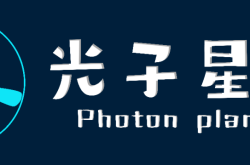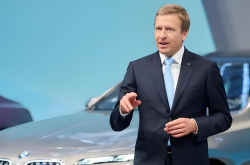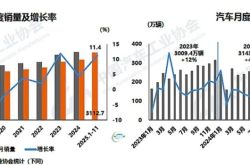Musk, the Maverick, Relies on China for Revival
![]() 08/28 2025
08/28 2025
![]() 525
525
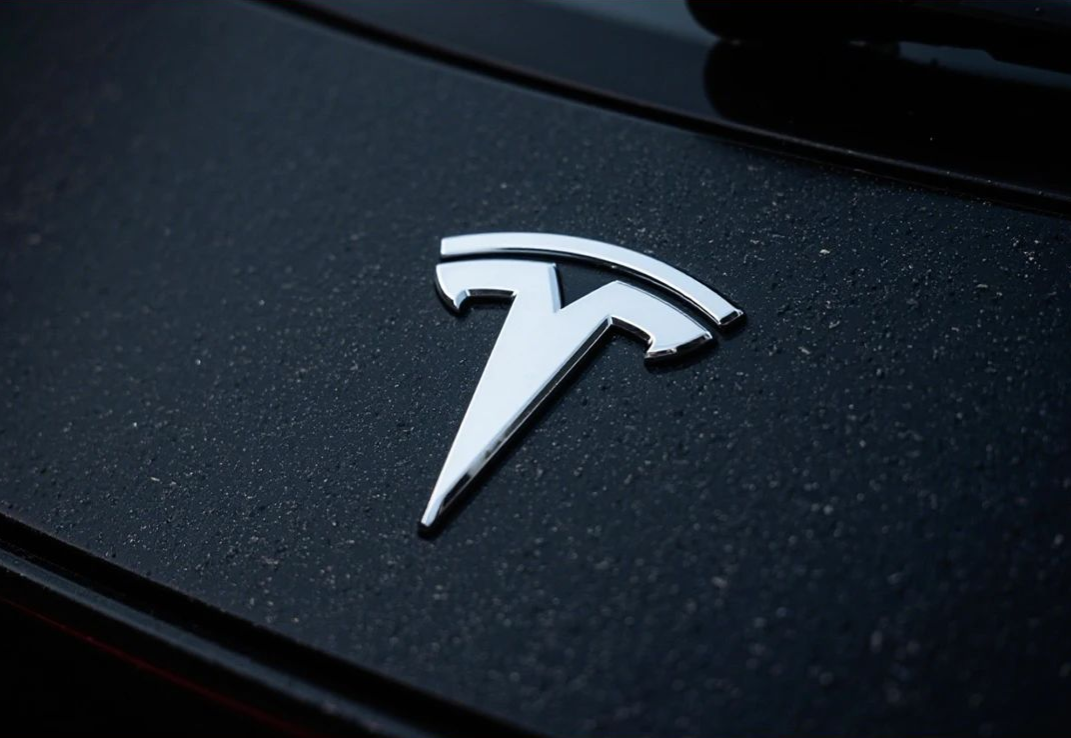
Source: Byte Source
The familiar Musk is back.
On August 25, Musk's AI startup, xAI, officially filed an antitrust lawsuit against Apple and OpenAI in the Federal Court of Texas, USA.
The 61-page complaint, brimming with fiery rhetoric, accused these two companies of 'unlawfully conspiring to obstruct fair competition in the field of artificial intelligence.'
This is not just a business rivalry; it's a declaration of war.
Just a few months ago, Musk was a red-hot figure in Washington, President Trump's closest ally. He headed the newly established 'Government Efficiency Department,' making waves within the federal government.
However, his glory was short-lived. Due to the 940-page 'Big and Beautiful Act,' the two had a complete falling out. Musk publicly accused Trump of involvement in the 'Epstein sex crime case,' while Trump retaliated by calling him 'crazy' and threatening to terminate all government contracts awarded to his company.
Ultimately, Musk left the White House in disappointment. On that day, Tesla's share price plummeted by 14%, and its market value evaporated by $152 billion overnight.
For Musk, the complexity of political maneuvering may have surpassed his understanding, and the comfort zone of the business world is more appealing.
01
Musk is Back!
After being 'exiled' by the White House, Musk swiftly returned to his most familiar role, the maverick tycoon of the business world.
He intends to conduct a thorough and personally styled reckoning with all 'enemies' on this new AI battlefield.
The primary and most important target is OpenAI, the 'child' he founded but which 'betrayed' him.
In 2015, at a dinner in Palo Alto, Musk and the budding Altman hit it off immediately, feeling as if they had met too late. They subsequently founded a non-profit AI research studio named OpenAI. As the name suggests, it is open and open-source. Their original intention was to create an open-source AI system similar to Linux, not controlled by any company or individual, serving as the best firewall to prevent humans from abusing AI.
Musk invested $44 million in OpenAI, not only renting the first office for the team but also personally recruiting Chief Scientist Ilya Sutskever from Google.
He put in money and effort, giving his all to OpenAI.
But history played a cruel joke. In 2018, the two parted ways due to differences in development philosophy. After Musk's departure, OpenAI quickly established a for-profit division and embraced Microsoft in 2020. The once 'guardian of humanity' eventually became a 'money-making tool' for Microsoft.
Therefore, when xAI accused OpenAI in the complaint of 'prioritizing profits over public safety,' it went beyond the scope of business competition.
And Musk's revenge extends beyond just a lawsuit. He chose the most cunning and deadly moment to deliver a devastating blow to OpenAI.
Just after OpenAI released GPT-5, which was criticized for its 'lack of excitement' and even labeled as 'too dad-like' by users, forcing it to revert to GPT-4's default settings and plunging into a whirlwind of public opinion, Musk delivered a 'steady, accurate, and harsh' strike.
On August 24, he announced with fanfare the open-sourcing of xAI's model Grok-2.
Very Musk-like, he used a seemingly 'noble' open-source gesture to contrast OpenAI's 'betrayal' and 'incompetence.' However, a closer look at its open-source agreement reveals many tricky details: companies and individuals with annual revenues exceeding $1 million are not allowed to use the model for commercial purposes; the model cannot be used to improve other models; and use of the model must be labeled 'Powered by xAI.'
This is hardly true open-sourcing, at best a 'limited openness.' Moreover, with the rapid pace of development in the AI field, Grok-2, from a year ago, has already become an 'obsolete model.'
Of course, Microsoft, the one that absorbed OpenAI, is also on his revenge list.
Musk will directly conduct a dimensional attack on Microsoft in a manner resembling performance art. He founded a new company named 'Macrohard' and submitted a trademark application to the United States Patent and Trademark Office.
One is 'Macro' and the other is 'Micro'; one is 'hard' and the other is 'soft.'
The purpose is clear as day.
He even openly declared that 'Macrohard's' goal is to replace Microsoft's core business with an AI black box: 'In principle, given that software companies like Microsoft do not produce any physical hardware, they should be able to be fully simulated by artificial intelligence.'
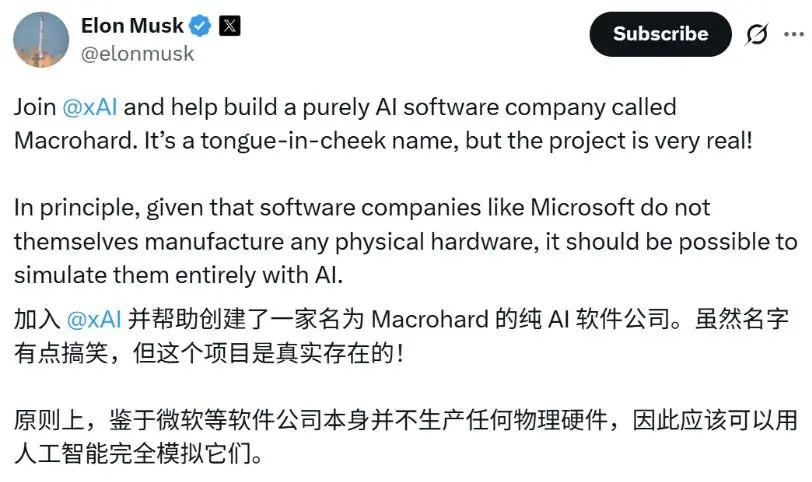
Screenshot from X
This idea of fundamentally disrupting the other party's business model is very Musk-like. Behind it also lies a strong personal grudge. The most famous incident was when Bill Gates was revealed to hold a short position of up to $500 million in Tesla, betting on its demise.
In a text message later exposed, Musk directly questioned Gates, to which Gates replied, 'Unfortunately, I haven't closed my position yet. I want to talk to you about the possibility of charity.'
Musk's response was blunt and confrontational: 'Sorry, when you short Tesla on a large scale—the company that has made the greatest contribution to solving climate change—I can't take your charity on climate change seriously.'
The climax of their escalating conflict was when Musk posted a picture of Bill Gates with a protruding belly on social media, accompanied by a scathing caption.
Such unabashed mockery completely publicized their conflict. Therefore, the birth of 'Macrohard' is more of a performance art aimed at humiliating the opponent than a business layout.
He gained publicity and suffered no losses; this operation was a complete win. It can only be said that the style is very Musk-like.
02
No Silicon Valley Tycoon Understands China Better Than Musk
Behind this series of near-maniacal operations that have offended the entire Silicon Valley, lies Musk's profound commercial insight into the ultimate war of AI.
He sees the 'blind spot' of all Silicon Valley tycoons.
In a recent public statement, Musk made a shocking remark: 'xAI will soon surpass any company except Google, but Chinese companies will be the strongest competitors because they have much more electricity than the United States and are super strong in hardware construction.'
Electricity is the ultimate battlefield for AI.
This insight is not baseless. When everyone was still crazy about software and algorithms, Musk was already fighting for energy and infrastructure in the physical world. From building Tesla's Supercharger network globally to vigorously developing energy storage businesses (Powerwall, Megapack), he understood earlier and more profoundly than any other Silicon Valley software tycoon the decisive significance of 'energy infrastructure' for the technological revolution.
After conducting on-site investigations of AI development in China and the United States, Chinese expert Ma Rui drew a conclusion that sent shivers down the spines of Silicon Valley: In China, there is no need to mention the abundant electricity supply for data centers.
Data from David Fishman, an expert who has been tracking China's electricity for a long time, directly points out the mystery: China's electricity reserve margin consistently remains at 80% to 100%, while the reserve margin of the US regional power grid is usually only 15%.
'Such a power reserve is unimaginable in the United States,' said David Fishman.
Even Jen-Hsun Huang, CEO of NVIDIA, has begun to worry about energy issues. He not only publicly stated that 'nuclear energy is a good choice' but also saw his venture capital arm, NVentures, directly participate in the latest $650 million funding round of TerraPower, the nuclear energy company founded by Bill Gates.
When Huang was just starting to make his layout, Musk had already been deeply involved in this field for many years.
Based on this profound insight, he once again turned his gaze to the East.
He has played this script before.
In 2019, Tesla was at its worst. The share price fell below $200, and from investors to the media, everyone was shouting that 'Tesla is doomed.'
Then, China stepped in.
With no money, China cumulatively loaned him 18.5 billion yuan; with no land, Shanghai specially approved a plot of land for Tesla in the Free Trade Zone. With the speed of China, it took only 357 days from the groundbreaking of the factory to the delivery of the Model 3 for mass production.
It was thanks to the rescue of the Chinese market that Tesla was able to 'rise from the ashes.'
Regarding this, Musk said, 'Without China's support, there would be no Tesla today.'
Even on the late night of May 31, 2023, when he appeared at Tesla's Shanghai Superfactory, Musk took off his suit and put on a blue jacket to take a group photo with employees: 'I want to tell the world loudly that Tesla's Shanghai Superfactory is not only one of the most efficient factories in the world but also produces some of the best-quality cars in the world. We have done many very meaningful things and injected a lot of positive energy.'
For a moment, the Chinese internet was flooded with titles like 'Secretary Ma' and 'Old Ma of the Chinese People.'
Now, on this new battlefield of AI, he seems to be replicating the successful path proven once in the new energy vehicle industry.
On August 22, Tesla partnered with ByteDance's Volcano Engine. The newly launched Model Y L will be equipped with the Doubao large model and DeepSeek model.
On such issues, Musk didn't hesitate and directly chose a local Chinese solution, leaving his own large model to open-source harassment of OpenAI.
When encountering huge resistance in the United States, he goes to the East to find variables for 'breaking the deadlock.' This is Musk's 'Eastern Code,' almost a unique core competitiveness among all Silicon Valley tycoons.
03
Costs and Compensation
However, history does not simply repeat itself.
When Musk returned to the commercial battlefield, he faced a Tesla that had been severely damaged by his own distractions.
During that time, Musk was high-spirited in Washington. He headed the newly established 'Government Efficiency Department,' leading a group of young people wearing red baseball caps with the slogan 'Make Trump Right' and making waves within the federal government—cutting departments, tightening expenses, and even getting into a fierce physical altercation with Treasury Secretary Mnuchin outside the White House. Photos taken by the media often showed him with bruises on his face.
You know, when Trump won the election, on Chinese social media platforms like Douyin, Trump only briefly occupied Chinese netizens' screens for half a day, after which Musk dominated the screen, mostly described as having 'meritorious service,' accompanied by the BGM of 'Spring Courtyard Snow' for a mesmerizing and brainwashing output.
But while he was enjoying the thrill of political power, a chill spread through the Tesla factories in Shanghai and Berlin.
In the first half of 2025, Tesla's performance was a disaster.
Global deliveries fell by 13.2% year-on-year, and in China, the most important overseas market, shipments declined year-on-year for six of the first seven months.
While Musk was busy cutting federal spending in Washington, China's new energy market had already become highly competitive. While the Model 3 and Model Y were still making minor tweaks like changing tail logos and adding ambiance, local brands had already installed 'refrigerators, TVs, and large sofas' in their cars.
Xiaomi's explosive popularity further disrupted the narrative logic of the entire new energy market, including Tesla.
Just in July, after Tesla officially announced the Model Y L, it sparked heated discussions. The next day, Musk posted an intriguing tweet on social media, repeatedly asking 'Are you OK,' and it was obvious who he was implying.
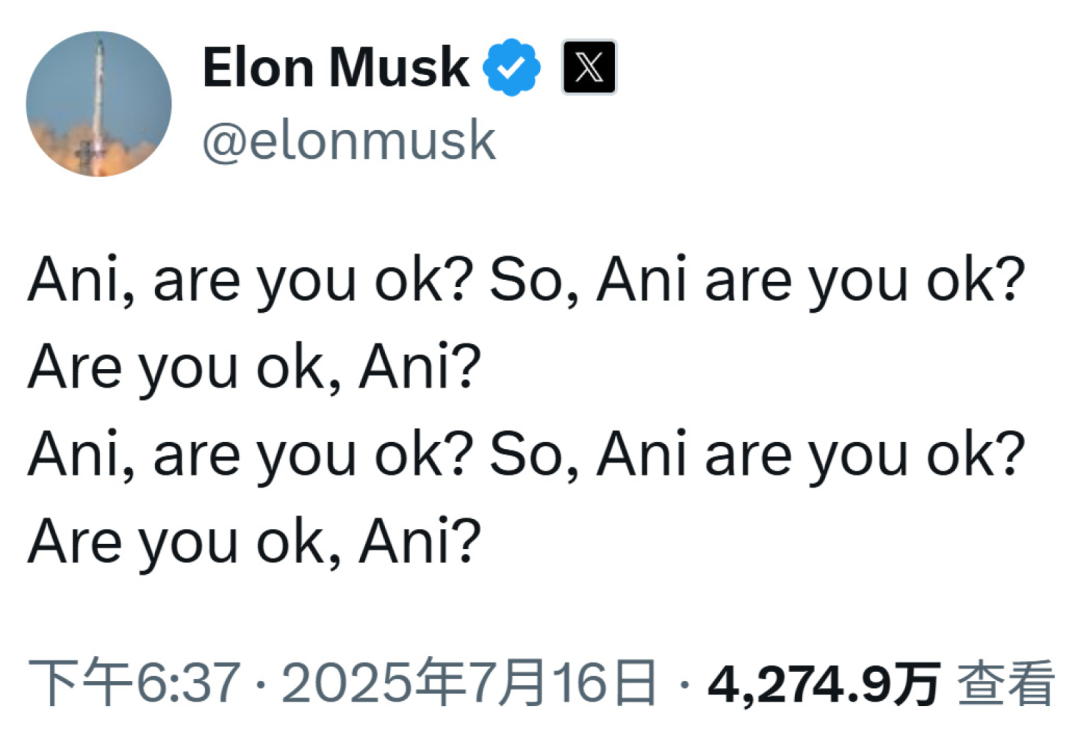
Screenshot from X
When second-tier Chinese automakers have evolved to 800V electrical architecture, Tesla's main models are still stuck on the 400V platform. The much-anticipated low-priced model Model 2/Q, originally scheduled for release on June 25, has vanished without a trace, completely missing the window of opportunity in the 150,000-yuan market segment.
The weakness of the basic disk quickly spread to the financial level. In the first half of 2025, Tesla's total revenue was $41.8 billion, a year-on-year decline of 11% from the same period last year of $46.8 billion.
And the two 'spiritual foods' supporting its trillion-dollar valuation are rapidly losing their effectiveness.
The highly anticipated FSD business, which Musk once said would be launched in Europe in 2025, has obviously hit a snag. And in the Chinese market, Tesla's FSD is unlikely to be implemented in the short term.
The once cash cow, the 'carbon seller' business, is also about to be zeroed out with Trump signing the 'Big and Beautiful Act' and overturning new energy policies.
The basic disk is weak, the new story is not well-told, and policy dividends have disappeared.
It can be said that Musk's 'distraction' in politics directly led to Tesla's continuous retreat in business.
This may explain why he is so aggressive now.
Musk publicly admitted that he suffers from Asperger's Syndrome, not to gain sympathy but as a clear declaration of power. His symptoms of Asperger's are particularly typical: highly focused, lacking empathy, and having a strong desire for control.
Therefore, when he lost everything at the political table and could not control Trump and the entire bureaucracy, that sense of powerlessness was something he had never experienced before.
When he returned to his most familiar commercial battlefield and regained the feeling of 'controlling everything' through a series of extreme operations such as filing lawsuits, humiliating opponents, and overturning rules, it seemed like he had found his footing again.
However, it remains to be seen whether the 'Chinese script' that once saved Tesla can help Musk establish an AI narrative.
Certain images have been sourced from the internet. Should there be any infringement, kindly inform us for prompt deletion.



